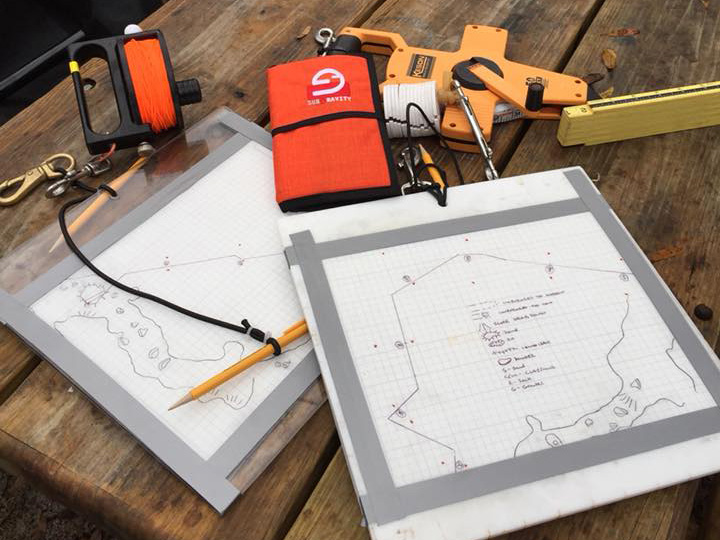Cave Survey
The TDI Cave Survey Diver Course is designed to give the trained cave diver the minimum knowledge and basic fundamental skills of how to survey in the unique underwater cave environment. The intention of this program is to encourage a standardization of cave surveying on all projects; encourage the use of cave maps in dive planning while increasing the diver’s awareness and knowledge of the surrounding environment. Safe techniques, procedures and skill perfection associated with surveying in cave diving is emphasized.

What you can expect to learn
The following topics must be covered during this course:
- Decompression theory and its application to survey diving
- Gas matching procedures/management
- Accident analysis
- Equipment considerations
- Compass readings
- Compass errors
- Streamlining
- Body posture and buoyancy control
- Survey techniques
- Sketching
- Tie-off stations
- Vertical surveying
- Large chambers
- Extended passages
- Radial surveys
- Review of problem solving
- Emergency procedures
- Survey process
- Data collection, verification and preparation
- Symbolism
- Cartography
- Single line maps
- High grade maps
- Cave environment/conservation
- Land owner relations
- Local access requirements
Course Equipment Requirements
The following equipment is required for each student:
- Primary cylinders, minimum volume is 22 litres / 160 cubic ft, manifold system recommended
- Two independent first and second stage regulators; one regulator equipped with a long hose at a recommended minimum length of 2 metres / 7 feet
- Submersible pressure gauge
- Buoyancy compensator device (BCD) with power inflator
- Exposure suit adequate for diving environment
- Mask and fins, NO snorkel
- Line cutting device
- Three battery powered lights; 1 primary and 2 back-ups, each with a with burn time suitable for the planned dive time
- Slate or wet notes with a pencil
- Submersible dive tables or backup dive computer
- Safety reel with a minimum of 37 metres / 125 feet of guideline
- One primary cave-diving reel with length appropriate for intended dive
- Jump/Gap reel 15 metres / 50 feet of line
- Three directional line arrows
- One non-directional marker
- Underwater compass and bulls-eye level mounted on slate
Note: It is recommended the team pre-position decompression cylinders approximately 1 stop deeper than the planned decompression depth on any dive where decompression is planned. Cylinders should be clearly marked and easily identifiable, even in no-visibility conditions. Each cylinder must have a regulator and submersible pressure attached.
Note: It is recommended the instructor have oxygen and first aid kit available for the surface support. In addition adequate drinking fluids should be available for all students, instructional staff and surface support personnel to prevent dehydration.
Course Prerequisites
- Minimum age of 18
- Certified as a TDI Full Cave Diver or equivalent
- Proof of at least 25 non-training cave dives
Want to know more?
Ask more questions or schedule any of these courses Email Us.
